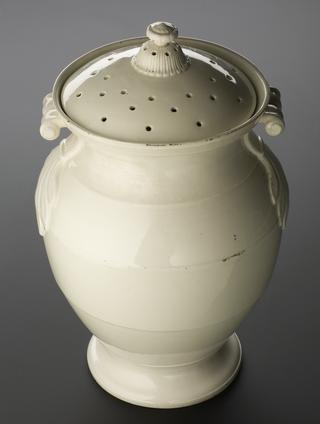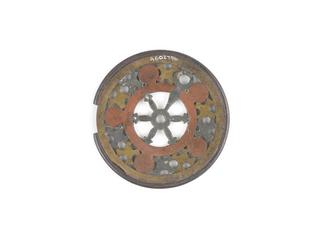
Tetraphenolporphyrin-cored hyperbranched polyglycidol samples
- maker:
- University of Sheffield






Two samples of tetraphenolporphyrin-cored hyperbranched polyglycidol being developed as a blood substitute (oxygen therapeutic), by the University of Sheffield, Sheffield, South Yorkshire, England, 2006-2007. One Sample is solid in a petri-dish with lid, and the other sample is liquid in a stoppered jar
Developed by a team led by Dr Lance Twyman, at the University of Sheffield over several years, these samples are from an early stage of their work to develop a human blood substitute. Made from plastic molecules that hold an iron atom, just like haemoglobin, the blood substitute binds with oxygen and transports it around the body. The artificial blood can be transported as a solid and dissolved into a liquid as needed, creating O negative blood, a universally transfusible blood type. The team hoped it would be useful as a plasma substitute, topping up people’s own blood, following wounding on the battlefield, accidents or trauma during natural disasters.
Donated blood relies on volunteers coming forward, has a short shelf life of around 35 days and must be refrigerated. All donations must also be screened for a range of conditions prior to being used.
Details
- Category:
- Therapeutics
- Object Number:
- 2007-28
- Materials:
- glass, tetraphenolporphyrin-cored hyperbranched polyglycidol, cellophane and paper (fibre product)
- Measurements:
-
overall (jar): 150 mm x 60 mm,
overall (petri-dish): 15 mm x 90 mm,
overall (total weight): 0.745kg
- type:
- substitute, sample, jar and petri-dish
- credit:
- Dept. of Chemistry, Sheffield University



